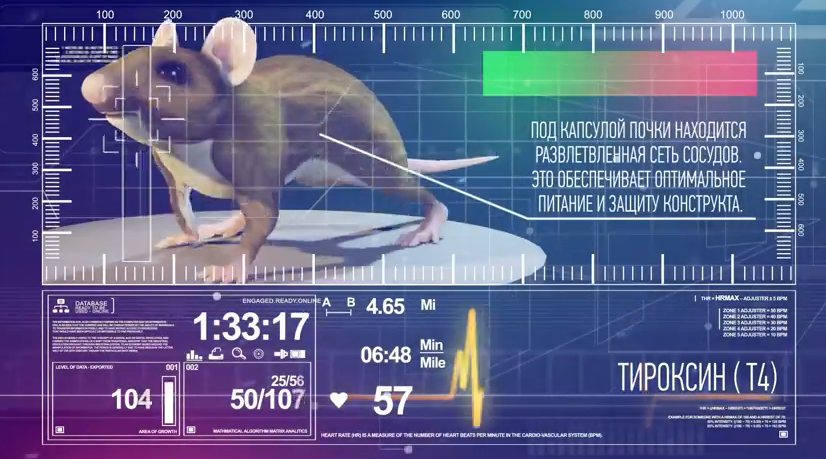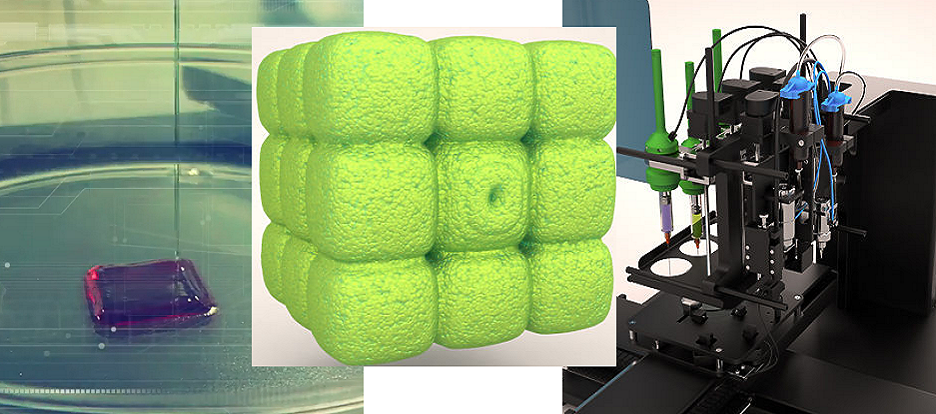The advancements seen within the field of 3D bioprinting are simply staggering. With numerous companies spending millions of dollars on advancing such technologies, we are in the early stages of what may be one of the most important medical revolutions of our time. With 3D printed human organs promising to one day eliminate the lengthy organ transplant waiting lists, perhaps saving hundreds of thousands of lives each year, these advances can not come soon enough.
Back in November we covered a story about a Skolkovo, Russia-based company called 3D Bioprinting Solutions. At the time, the company, which is headed up by Vladimir Mironov, made headlines,  promising to have a 3D printed thyroid gland of a mouse by March of this year.
promising to have a 3D printed thyroid gland of a mouse by March of this year.
Here we are at the end of March, and the company has seemingly come through, holding a major press conference in Russia yesterday to announce their achievement. On March 12 the first ever thyroid gland for an animal — a mouse — was printed using the company’s patented bioprinting process. The goal here was to print a thyroid gland which could then be transplanted into a living mouse in order to further evaluate its capabilities.
 The transplantation is expected to take place very soon, with researchers choosing to implant the organ into a mouse suffering from hypothyroidism, a condition which is caused by an excess of iodine in the body. Once implanted, they will evaluate the condition of the mouse and release the results of the study to the general public at the Second International Congress on Bioprinting in Singapore on July 9-10.
The transplantation is expected to take place very soon, with researchers choosing to implant the organ into a mouse suffering from hypothyroidism, a condition which is caused by an excess of iodine in the body. Once implanted, they will evaluate the condition of the mouse and release the results of the study to the general public at the Second International Congress on Bioprinting in Singapore on July 9-10.
Researchers working for 3D Bioprinting Solutions chose the thyroid because of its simplicity. With that said, thyroid cancer is the 16th most commonly diagnosed form of cancer on the planet, with close to 300,000 new diagnoses in 2012 alone. Additionally, millions more suffer from other thyroid disorders, meaning that the ability to print a thyroid gland on demand could have major positive implications for an extraordinary number of individuals.
The printer used to construct the thyroid, works by using stem cells taken from the living orgasm via its fat cells. It then mixes these cells with a hydrogel, placing them down via an extruder, layer-by-layer. Once the cells take shape, the hydrogel dissolves, leaving the organ. The rejection of the organ should be minimal according to Mironov because it is created from the organism’s own stem cells. In essence, their body indirectly created the organ with the help of the 3D printer.
3D Bioprinting Solutions eventually wants to also 3D print other organs, especially the kidney. In fact, they claim that they are on pace to do so by 2018.
“The one who will be the first to print and then successfully transplant the kidney to the patient, who will stay alive, will for sure get a Nobel prize,” explained Mironov.
It will be interesting to see the results of the first animal trials in July, as well as if the company can remain on track to print out an actual kidney by 2018. Let’s hear your thoughts on this research in the 3D Printed Thyroid forum thread on 3DPB.com. Check out the video below (in Russian) describing the process used to 3D print this thyroid gland.
Subscribe to Our Email Newsletter
Stay up-to-date on all the latest news from the 3D printing industry and receive information and offers from third party vendors.
You May Also Like
Precision at the Microscale: UK Researchers Advance Medical Devices with BMF’s 3D Printing Tech
University of Nottingham researchers are using Boston Micro Fabrication‘s (BMF) 3D printing technology to develop medical devices that improve compatibility with human tissue. Funded by a UK grant, this project...
3D Printing Webinar and Event Roundup: April 21, 2024
It’s another busy week of webinars and events, starting with Hannover Messe in Germany and continuing with Metalcasting Congress, Chinaplas, TechBlick’s Innovation Festival, and more. Stratasys continues its advanced training...
3D Printing Webinar and Event Roundup: March 17, 2024
It’s another busy week of webinars and events, including SALMED 2024 and AM Forum in Berlin. Stratasys continues its in-person training and is offering two webinars, ASTM is holding a...
3D Printed Micro Antenna is 15% Smaller and 6X Lighter
Horizon Microtechnologies has achieved success in creating a high-frequency D-Band horn antenna through micro 3D printing. However, this achievement did not rely solely on 3D printing; it involved a combination...






























